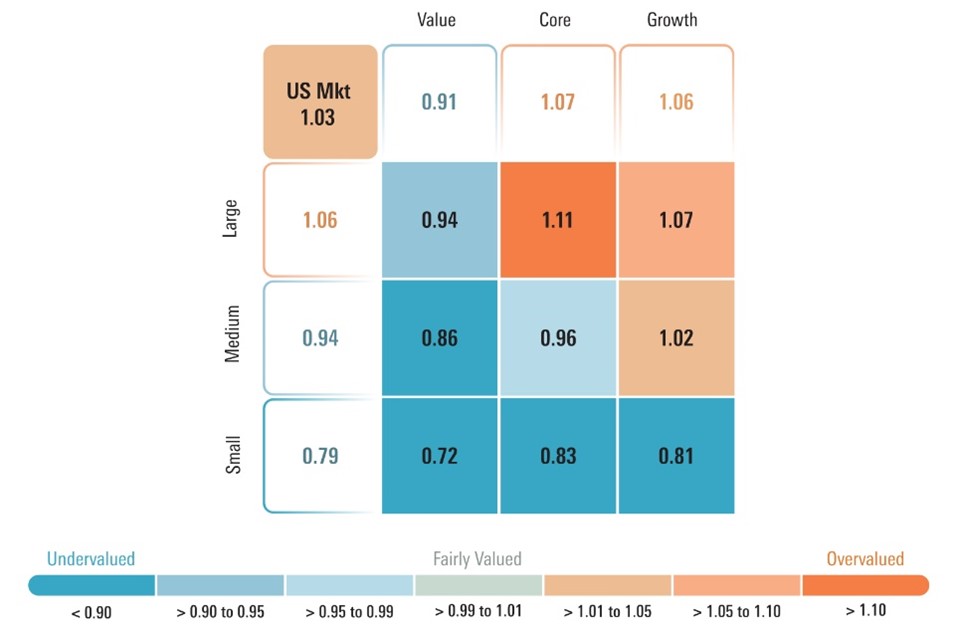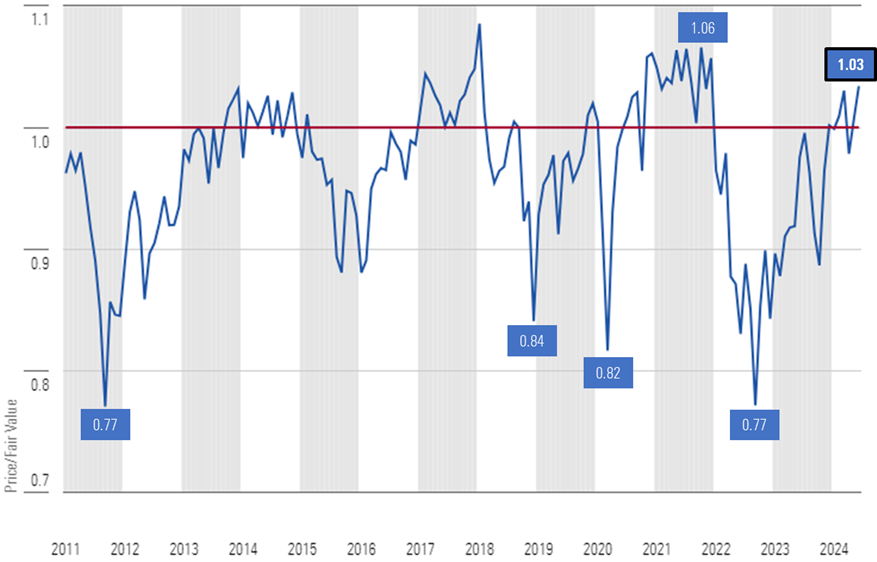Top 10 Suggestions For Evaluating The Accuracy And Performance Of Ai Trading Platforms For Stocks
In order to be sure that the software you select can provide reliable insights and forecasts, you must be able to assess its accuracy and performance. Here are 10 top tips to assess these platforms.
1. Backtesting Results
What to look out for Check if the program allows for backtesting, which will allow you to assess how predictions would have performed based on historic data.
What is the significance of backtesting? Backtesting can be used to verify the validity of an AI model through comparing the predictions with historical results.
Find platforms that provide the capability of setting backtesting parameters.
2. Real-time Performance Monitoring
What to look for What to look for: Examine how the platform performs under real-time market conditions.
Why It's Important The real-time results are an excellent indicator of the performance of a platform rather than past backtesting.
Tips: You can make use of an account demo, or a trial version of the program to monitor live movements in real time and then compare it with your predictions.
3. Prediction Error Metrics
What to Look for Utilize metrics like Mean Absolute Error or Root Mean Squared Error or R-squared to gauge the accuracy of predictions.
Why it is Important : These measures provide a quantitative way to determine how close predictions are to the actual results.
Platforms that openly share metrics are usually more transparent.
4. Win Rate and Ratio of Success
What to look for When you check the platform's winning rate (percentage of accurate predictions) and the success rate (profitability of trading based on forecasts).
What is important The high success rate and win rates suggest better precision in forecasting and a greater chance of generating profits.
Tip: Be cautious of platforms that claim unrealistic winning rates (e.g. 90, 90 %+), because no system is perfect.
5. Benchmarking Market Indices for Benchmarking
What to Look Out For See if you can compare platform predictions and their results to the important indexes (e.g. S&P 500, NASDAQ).
Why it is Important : This can help determine if a platform outperforming or is underperforming the general market.
TIP: Look for an outperformance that is consistent over a variety of times, not just quick-term gains.
6. Consistency Across Market Conditions
What to look for Find out how the platform performs under different market conditions (bull or bear markets or high volatility).
Why it Matters A solid system will be successful not only in favorable market conditions, but as well in any other circumstance.
Tips: Use the platform in volatile times or downturns in the market.
7. Transparency in Methodology
What to look out for: Understand AI algorithms and models (e.g. reinforcement learning, neural networks).
Why It Matters Transparency is crucial as it allows you to determine the reliability and scientific accuracy of the system.
Tips: Stay clear of platforms that employ "black box" models without explaining how they generate predictions.
8. Users Review and Independent Testing
What to look for when choosing a platform: Read the reviews of users and search for tests that are independent or independent reviews.
Why it matters: Independent test results and reviews provide objective insight into the accuracy of the platform and performance.
Check user reviews in forums such as Reddit copyright and financial blogs.
9. Risk-Adjusted Returns
What to Look For: Evaluate the performance of your platform using risk-adjusted metrics like the Sharpe Ratio or Sortino Ratio.
What is important: These metrics take into account the level of risks that are taken to earn returns. This provides a full overview of the performance.
Tip: A Sharpe Ratio (e.g. higher than 1) indicates better risk-adjusted returns.
10. Long-term track record
What to Watch Out For Check the effectiveness of the platform over a long period (e.g. for 3-5 year).
What is important. Long-term performance can be more reliable than results that are short-term.
Do not use platforms that show only some short-term results or only show a few instances of success.
Bonus Tip - Try your account using the demo version
Check out the platform's real-time prediction with a demo or trial account without risking your money. This lets you test the accuracy and effectiveness.
These suggestions will allow you to assess the reliability of AI platform for predicting stocks and analyzing them and select one that is compatible with your objectives in trading and willingness to take risks. Never forget that no platform can be flawless. Combining AI insights with your own research is the best method to choose. See the most popular inciteai.com AI stock app for more recommendations including AI stock trading bot free, best ai trading software, AI stocks, AI stock trading, ai trade, stock ai, ai investing app, chatgpt copyright, using ai to trade stocks, investing ai and more.

Top 10 Tips To Evaluate The Latency And Speed Of Ai Platform For Analyzing And Stock Predicting
When looking at AI trading platforms which can predict or analyze price movements, speed and latency are important factors, particularly for high-frequency and algorithmic traders. Milliseconds could affect the execution of trades and even profitability. Here are ten top strategies to evaluate the speed and latency of these platforms.
1. Assess Real-Time Data Feeds
Speed of data delivery - Make sure that the platform can provide real-time data with a minimal delay (e.g. the sub-millisecond delay).
Closeness of the data source: Find out if servers are located close to major exchanges.
Data compression - Make sure that the platform is using efficient techniques for data compression to increase data delivery speed.
2. Test Trade Execution Time
Order processing: The platform's capability to execute and process trades quickly when an order is placed.
Direct market access (DMA): Ensure the platform offers DMA that lets orders be made directly to the exchange without intermediaries.
Reports on execution. Make sure the platform offers comprehensive execution reports. These reports should include dates for order submission, confirmation and fill.
3. Review the Platform Response
User interface (UI) speed: Test how fast the UI on your platform responds to inputs (e.g. click buttons, loading charts).
Chart updates. Verify that charts and visualizations are updated in real-time update that is not delay.
Performance of mobile apps. If you're using a smartphone application you can expect it to run similarly to the desktop version.
4. Find out if the network infrastructure is low-latency.
Server locations The platform should utilize low-latency, high-speed servers that are located close to major exchanges or financial hubs.
Co-location service: Discover whether your exchange offers this feature. This lets you host trading algorithm on servers near to the exchange.
High-speed networks: Check if the platform is running high-speed fiber optic networks or low-latency technology.
5. Backtesting and Evaluation of Simulation Speed
Historical data processing: Test the speed at which the platform process and analyzes historical data for backtesting.
Platform latency must be minimal enough to allow for real-time simulations of trades.
Parallel processing: Find out whether the platform uses parallel processing or distributed computation to speed up calculations.
6. Check the API Latency
API response time: Measuring how quickly the platform’s API responds (e.g. getting market data or placing orders).
Rate limits: Make sure that the API has reasonable limits on rates in order to avoid delays when trading at high frequency takes place.
WebSocket support Find out if your device is running WebSocket protocol for low-latency, real-time streaming of data.
7. Test Platform Stability Under Load
High-volume trading: Simulate high-volume trading scenarios to assess whether the platform is steady and responsive.
Market volatility: Test the platform during periods of high market volatility to see if that it can handle sudden price fluctuations.
Utilize the tools available on the platform to test your strategies under extreme conditions.
8. Review Connectivity and Network
Internet speed demands. Be sure your connection speed is sufficient to match the recommended speed of your platform for maximum performance.
Redundant connections: Check to determine if there are any redundant connections available.
VPN latency. Verify if you are using a VPN to determine if it causes latency.
9. Make sure to check for speed enhancement features
Pre-trade analytics - Ensure that the platform has analytical tools for pre-trade to improve the routing of orders.
Smart order route (SOR) : Check to determine whether SOR is utilized by the platform in order to identify the most efficient and most cost-effective execution options.
Use the tools available on the platform to analyze and monitor latency in real-time.
Review User Feedback Benchmarks
Feedback from users: Use reviews of users to evaluate the platform's performance in terms of the speed of its operation and latency.
Benchmarks provided by third parties: Look for independent benchmarks and reviews which compare the performance of the platform against its rivals.
Case studies: Check if the platform provides testimonials or case studies highlighting its low-latency capabilities.
Bonus Tips:
Trial period: You are able to avail a demo for free or a trial period to test the performance and latency of the platform.
Support for customers: Check to determine if the platform has assistance for issues with latency or for optimization.
Hardware requirements: Find out if the platform needs specific hardware for the best performance.
These guidelines will assist you assess the speed and duration of AI software for predicting and analyzing stocks. This way you'll be able select a platform that meets your requirements while also reducing delays. Low latency is crucial for high-frequency and algorithmic traders. Even minor delays can have a huge impact on profits. Read the top rated do you agree on best ai trading platform for more examples including ai trading tool, AI stock prediction, stock trading ai, invest ai, ai options trading, how to use ai for stock trading, invest ai, best AI stock prediction, ai software stocks, AI stock trader and more.

Comments on “20 New Tips For Picking AI Stock Analysis Platforms”